
— Corporate Training Program 6 Weeks Industrial Training in Jalandhar We are providing best 6 weeks industrial training in jalandhar. Our trainers are having more than 15 years of experience. Our students are well placed in various companies. We also provide 3 months/6 Weeks Summer industrial training to B.Tech (all branches), Polytechnic Diploma, IT/MCA/BCA/DCA, and MBA students. Our Commitment to Your Success: 6 weeks industrial training is a vital period for students to gain knowledge about the field in which they want to make their career. It’s important for them to take this period seriously as it will help them in getting the right job. Industrial Training helps students in gaining knowledge about the technical and logical working of the chosen field. They get an overview of the real world industry scenario and how things work in the company. They learn to apply the theoretical concepts they learned in their degree course to the workplace. For any queries regarding registration or training, you may contact at: +91-84373-65007, 0181-5015007 There are many reasons why you should consider joining an Industrial Training Course. The following are some of them: Practical Knowledge This course provides you with practical skills that are essential for you to learn and understand any subject in depth. Usually, when a person reads a text, only words create a visualization. However, in the case of industrial training, you will be able to see, touch, and feel how things are done. In this six weeks training, you will get the opportunity to apply your theoretical knowledge in a real-world context. This is why it is so important to acquire the right training for you. One of the primary reasons why industrial training is so important is that it gives you an understanding of the industry environment. In addition, it will also help you decide what you want to do with your life. There are many advantages to taking a 6 weeks industrial training course. For starters, you will learn new technologies that are booming the market. You will be able to learn about the latest trends in technology. You will have a chance to work on live projects and get job placement support. Here are some steps you can take to find and make the most of a 6-weeks industrial training opportunity: 1. Identify your field of interest: Determine the industry or field you want to gain experience in. This could be related to your academic studies or a field you wish to explore further. 2. Research organizations and companies: Look for organizations, companies, or institutes that offer industrial training programs in your chosen field. You can search online, check job portals, contact local companies, or get recommendations from your academic institution. 3. Check eligibility requirements: Review the eligibility criteria for the industrial training programs you’re interested in. Some programs may require specific academic qualifications or prerequisites. 4. Prepare your application: Once you’ve identified a few suitable programs, prepare your application materials. This typically includes a cover letter, resume or CV, and any additional documents or certificates they may require. 5. Submit your application: Send your application to the organizations offering the industrial training programs. Follow their application instructions carefully and meet the deadlines. 6. Prepare for interviews: If your application is shortlisted, you may be called for an interview. Research common interview questions and prepare your responses. Be ready to highlight your skills, knowledge, and enthusiasm for the field. 7. Make the most of the training period: Once you secure a position in an industrial training program, treat it as a valuable opportunity to learn and gain practical experience. Be punctual, attentive, and proactive during your training. Ask questions, seek guidance from experienced professionals, and take on tasks with enthusiasm. 8. Network and build connections: Use this training period to build your professional network. Interact with colleagues, supervisors, and industry professionals. Attend any workshops, seminars, or events that may be organized during your training. Networking can be valuable for future job opportunities or references. 9. Learn from the experience: Reflect on your training experience and identify areas where you have grown and skills you have acquired. Take note of any challenges you faced and how you overcame them. This reflection will help you articulate your experience during future job interviews.

Why Do We Need Cloud Computing Why Do We Need Cloud Computing: Cloud computing is the exchange of computing services such as data storage, software, applications, servers etc going to the cloud means the Internet. Cloud Computing provides a substitute for the hypothetical datacenter. With an On-premises data centre, we can manage things like buying and installing the hardware, software, virtualizations, Installing the operating system, needed software and hardware applications, setting up the local and public network, building and composing the firewall and most importantly setting up the storage for longlast data. After doing this wet-up, we can easily maintain the lifecycle of cloud computing. Features What is the future scope of the Cloud Computing field? In the field of networking cloud computing is the best platform if you’re thinking of choosing this profession. This platform is responsible for the development of deep knowledge of the business end user, cloud platform as well and integrated systems used by their companies. Those who are well experienced and skilled in cloud computing platforms can earn up to 5 lakhs PA. This was a basic introduction to cloud computing. Interested candidates can join our company for the cloud computing course in Jalandhar and Hoshiarpur. O7 Services gives the best Training in cloud computing in Punjab. What are the different types of cloud computing? There are a variety of kinds of cloud computing. Each has distinctive characteristics and advantages. Here are a few of the most popular kinds: Infrastructure as a Service (IaaS): This kind of cloud computing is a way to provide computing resources that are virtualized over the Internet. IaaS lets companies rent servers, storage, and networking equipment cost-per-use. Platform as a Service (PaaS): PaaS is an infrastructure for developers to create tests, deploy, and test applications without worrying about the infrastructure. PaaS providers provide built-in tools for developers and services that can be used to build customized applications 45. As a Service (SaaS) SaaS is a delivery model that lets users access software applications via the Internet. SaaS companies host and manage software accessible via a browser on the web or mobile apps 14. Serverless computing: Serverless computing is a type of computing that lets the cloud provider handle the infrastructure and assign resources according to the needs. It allows developers to concentrate on writing code and not worry about managing the servers and infrastructure. 1. Managed HTML0-Managed Private Cloud cloud is a cloud-based infrastructure exclusively used by only one company. company has full control over its resources and can modify the cloud as required. Cloud The Community Cloud providers manage the infrastructure; however, each company has its own resource set and can alter it according to its needs. Public Cloud: The public cloud provides infrastructure accessible to the public and accessible through the Internet. The cloud provider manages its infrastructure, and the users may lease resources on a pay-as-you-go basis 163. Hybrid Cloud A Hybrid cloud combines two or more distinct kinds of cloud-based infrastructures (public, private, or community). Hybrid cloud allows businesses to reap the advantages of various cloud types while maintaining control of their applications and data 13. Distributed Cloud: A distributed cloud is a form of cloud computing for public use that lets data centres be situated anywhere in the globe. This allows organizations to make use of local data centres while being capable of accessing resources from other locations.

Ethical Hacking Course in Jalandhar O7 Services offers an ethical hacking course in Jalandhar, focusing on essential techniques and tools. The course aims to teach individuals how to use hacking techniques for ethical purposes, such as strengthening system security. Ethical hackers aim to identify weaknesses and barriers within organizations, preventing data breaches. Ethical hacking involves unauthorized access to computer systems, software, or data, using methods similar to malicious attacks, thereby enhancing network security. Recognising security vulnerabilities is critical. Steps on How to Become an Ethical Hacker Step 1: Knowledge of Linux/Unix OS Linux is an open-source operating system that provides our computer systems with unparalleled protection. If you want to become a hacker, Linux should be your go-to operating system, as it’s widely used as the foundation of hacking tools such as Kali Linux, an iconic hacking OS used for hacking purposes. Step Two: Learn a Programming Language Step two requires learning C, the mother of all programming languages. however, hackers should possess skills in at least 2-3 programming languages, such as Python; ethical hackers are increasingly opting to study this field rather than the C language. Step Three: Learn How to Stay Unnoticed As a hacker, knowing how to be unidentified means being able to conceal their identity from others. Step 4: Comprehensive Understanding of Networking Concepts Becoming an ethical hacker involves understanding network fundamentals. A comprehensive knowledge of networking protocols will aid in discovering vulnerabilities; ethical hacking focuses on networking. Step Five: Unveil the Hidden Network The dark web is a vital resource for hacking purposes and serves as an online hub for end users wanting to bypass unidentified people around the globe. People use the dark web for both legal and illegal activities; therefore, one must become acquainted with this hidden web space. Step 6: Introduce cryptography and expand your expertise The ethical hacking course in Jalandhar teaches participants about networking protocols, exploiting vulnerabilities, and navigating the dark web. It introduces cryptography, a crucial skill for hackers, as it helps in encrypting and decrypting data, ensuring information security and integrity. Step 7: Assess Vulnerabilities Vulnerability refers to the weakest points or vulnerabilities within any system. By inspecting its components and networks, one can identify all the loopholes. Step four is to practice and explore various environments with tools, attacks, and more. Also, meet hackers through social networks such as Facebook or Twitter to gain knowledge and enhance existing skills. Ethical Hacking Course Fees in Jalandhar The fees for an ethical hacking course can vary depending on the institute or online platform chosen. However, on average, the fees for such courses in India range from 30,000 to 1,00,000 INR. It is important to research and compare different options before choosing a course that suits your budget and requirements. Do you know about the salary for ethical hacking? Fresh graduates entering ethical hacking in India can expect an estimated starting salary package of 3.5 LPA. An introduction to ethical hacking is given here. Get in touch with O7 Services if you’re interested in taking an ethical hacking course; we provide them in Jalandhar.
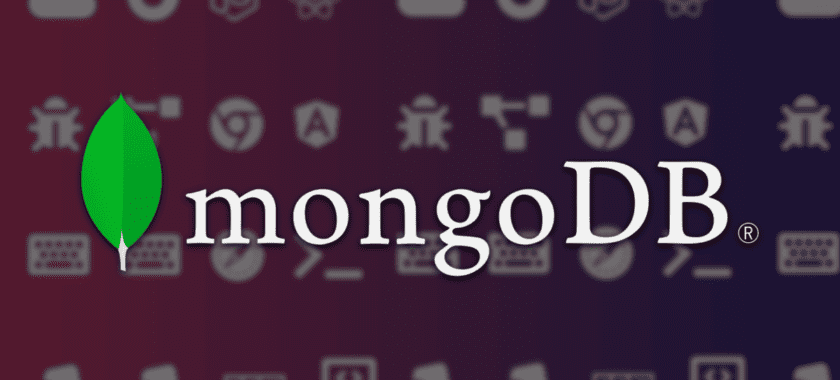
What is MongoDB What is Mongodb – MongoDB is a JSON Like Structure DB, Which provides to store data in JSON Objects format in Database MONGODB is an NoSql data Format In SQL we mainly use and work with relationships for data management that is called RDBMS(relational database management system). We are choose No sql because it is non-relational and it is document-oriented database management system or example: Let’s say we want to store students’ information into a database. In the relational database In Relational Database No Name Class Roll no 1 Rahul CSE 6 In mongo DB [{ “_id”:1, “Name”:”Rahul”, “Class”:”CSE”, “Roll no.”:6” }, { // Data }] In SQL : In No SQL: Because of its simplicity and flexibility, MongoDB is getting more and more popular. Either it MEAN, MEVN or MERN stack there M means MongoDB How does MongoDb work? MongoDB is based upon a NoSQL database and its working is much easier than with any other relational database. There are no tables in MongoDB which means, all the data is stored in JSON format,i.e. key-value pairs. In JSON, we define a unique key with a value correlated with it. These key-value pairs are stored in a document, which means all the data is stored in a collection. A collection in MongoDB can have many documents and such documents can have any number of key-value pairs. As I discussed earlier, data in the MongoDB database is stored in BSON. BSON is nothing but extended JSON. It supports more data types than JSON. We contain anythinglikek, string, integer, boolean, binary data, object, array, javascript cod,,e and many more in a MongoDB document. These documents are grouped inside a collection. A collection can be similar to a table in a relational SQL database. A collection always exists in a database and there is no predefined structure of a collection.In relational database management system, the database contains tables and in MongoDB, the database management system contains collections. Features of MongoDb Main Advantages of MongoDb MongoDB CRUD Operation C: Create R: Read U: Update D: Delete Important Terms in MongoDb Conclusion This is the basic introduction of MongoDB. If you are interested in advanced knowledge related to this technology, then you visit at O7services ,we are providing online/offline MongoDB courses in jalandhar.
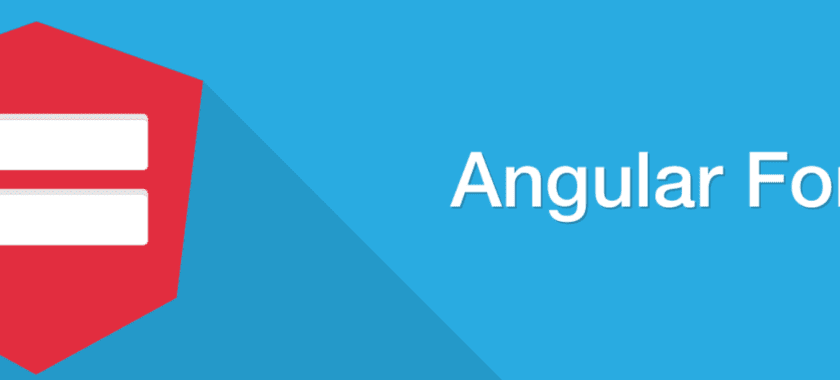
Reactive Forms Reactive forms are built on the following base classes of the Form Model. Form Group: route the similar value and status for collection of form control. Form Control: route the value and validation status of individual form control. Form Array: route the same value and status for an array of form control. With reactive from, you mention the form model directly in the component class. There are three steps to using form controls. Enter the reactive forms module in your application. This module is communicating the reactive-form directives that you need to use reactive forms. Generate a new Form Control sample and save it in the component. Lodge the form control in the template. Import { Reactive FormsModule } from ‘@angular/forms’ @NgModule({ imports: [ ReactiveFormsModule ] , } ) then, export class AppModule{} ng generate component forms (component name) Forms.component.ts Import { Reactive FormsModule } from ‘@angular/forms’ And, inside the export class add name = new formcontrol(‘’); In forms.component.html Inside the form you mention: <Label>Name</label> <input type=”text” [form Control] =”name>This is the concept of Reactive forms in Angular. If you are interested to learn more details then you go through our website o7services.com. We are providing an Angular online/offline course in Jalandhar. We are also providing angular training in Jalandhar.
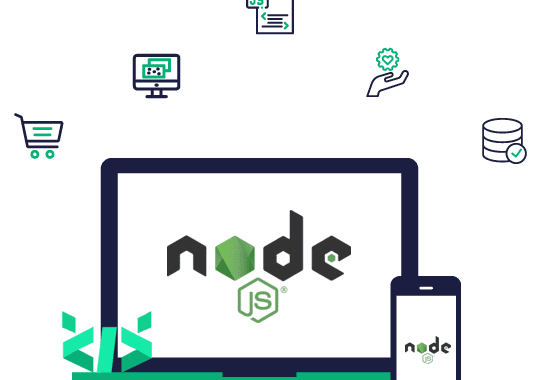
How to Install Node JS on Windows Welcome to our beginner’s guide on how to install Node JS on Windows! If you’re new to programming or looking to explore the world of web development, Node JS is a must-have tool in your toolkit. This open-source, cross-platform JavaScript runtime environment allows you to build scalable and high-performance applications. However, getting started with Node JS can seem daunting, especially if you’re not familiar with the installation process. But fear not, as this step-by-step tutorial will walk you through the entire installation process on your Windows machine. From downloading the Node JS installer to verifying the installation, we’ve got you covered. So, let’s dive in and get you up and running with Node JS in no time. Whether you’re a budding developer or an experienced programmer looking to expand your skill set, this guide will be your go-to resource for all things Node JS installation on Windows. Let’s get started! Why use Node.js on Windows? Node.js has gained immense popularity among developers for its ability to build fast and scalable network applications. Whether you’re working on a small project or a large-scale application, Node.js offers a range of benefits that make it an ideal choice for web development on Windows. Firstly, Node.js is based on Chrome’s V8 JavaScript engine, which makes it incredibly fast and efficient. This means that you can write server-side JavaScript code that can handle a large number of concurrent connections without sacrificing performance. Secondly, Node.js has a vast ecosystem of modules and packages available through its package manager, npm. This allows you to easily integrate third-party libraries into your projects, saving you time and effort in writing everything from scratch. Lastly, Node.js is cross-platform, which means that you can develop your applications on Windows and deploy them on other platforms like Linux or macOS without any major modifications. This flexibility makes Node.js a great choice for developers who work on multiple operating systems. System requirements for installing Node.js on Windows Before we jump into the installation process, let’s take a look at the system requirements for running Node.js on your Windows machine. To ensure a smooth installation and optimal performance, make sure your system meets the following requirements: – Operating System: Windows 7 or later – Processor: 1 GHz or faster – RAM: 512 MB or more – Disk Space: 200 MB or more It’s important to note that these are the minimum requirements, and for better performance, it’s recommended to have a more powerful system. Once you’ve confirmed that your machine meets these requirements, you’re ready to proceed with the installation. Downloading and installing Node.js on Windows To install Node.js on your Windows machine, you’ll need to download the Node.js installer from the official Node.js website. Here’s a step-by-step guide to help you through the process: 1. Open your preferred web browser and navigate to the official Node.js website at [https://nodejs.org](https://nodejs.org). 2. On the homepage, you’ll see two versions of Node.js available for download: LTS (Long Term Support) and Current. For most users, it’s recommended to download the LTS version as it provides stability and support for a longer period. Click on the LTS version to initiate the download. Once the installer is downloaded, locate the downloaded file and double-click on it to start the installation process. The Node.js installation wizard will guide you through the steps, and you can choose the default options for most settings. After the installation is complete, you can verify the installation to ensure that Node.js is successfully installed on your Windows machine. Verifying the installation of Node.js To verify the installation of Node.js on your Windows machine, you can use the Command Prompt or PowerShell. Here’s how: 1. Open the Command Prompt or PowerShell by pressing `Win + R` and typing `cmd` or `powershell`, then press `Enter`. 2. In the Command Prompt or PowerShell window, type `node -v` and press `Enter`. This command will display the installed version of Node.js. If you see the version number displayed, congratulations! Node.js is successfully installed on your Windows machine. If you encounter any errors or don’t see the version number, double-check the installation steps and try again. Setting up the Node.js environment variables To use Node.js and its associated tools from any directory in the Command Prompt or PowerShell, you’ll need to set up the Node.js environment variables. Here’s how to do it: 1. Open the Control Panel on your Windows machine. 2. Search for “System” and click on “System” from the search results. 3. In the System window, click on “Advanced system settings” on the left-hand side. 4. In the System Properties window, click on the “Environment Variables” button. 5. In the Environment Variables window, under “System variables,” scroll down and find the “Path” variable. Click on “Edit.” 6. In the Edit Environment Variable window, click on “New” and enter the path to the Node.js bin folder. By default, the path would be `C:Program Filesnodejs`. Click on “OK” to save the changes. With the environment variables set up, you can now use Node.js and npm (Node Package Manager) from any directory in the Command Prompt or PowerShell without having to specify the full path. Installing Node.js packages and modules using npm One of the key advantages of using Node.js is the vast library of packages and modules available through npm. npm, which stands for Node Package Manager, is a command-line tool that comes bundled with Node.js. It allows you to easily install, manage, and update packages for your Node.js projects. Here’s how you can install Node.js packages using npm: 1. Open the Command Prompt or PowerShell. 2. Navigate to the directory where your Node.js project is located using the `cd` command. For example, if your project is located in `C:Projectsmy-app`, you would use the command `cd C:Projectsmy-app`. 3. Once inside the project directory, you can use the npm command followed by the package name to install a package. For example, to install the popular Express framework, you would use the command `npm install
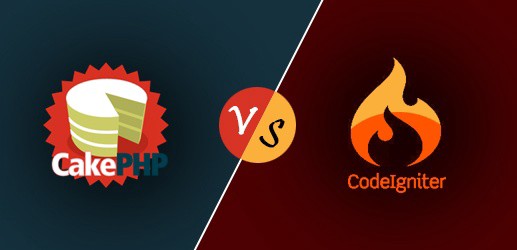
Which is better Cake PHP and Codeigniter Cake php is fast development framework it is building structure for programmers to create web applications. It is a free and open-source. It is php framework and it is model view controller architecture. It requires less coding in order to generate web applications and is used in the website to manage the structured and provide secure website content. Features of cakephp Cake PHP request cycle Now we discuss cakephp life cycle point that how it works: The request is redirected to the index.php that are based on the webserver rewrite rules. Auto load and bootstrap files are executed Dispatch Filter and routing are composed to handle the request and then they optionally give back to the response. Then dispatcher select the appropriate controller according to the routing rule that are defined. The controller perform actions and they only interacts with the required models and components The controller proxy the created output to view for generating the response from the model data. The view uses Helpers to generate the response of the client request. Finally, the generated response is sent back to the client. Code Igniter: It is built on a pattern design that is called MVC. It is application development framework for building a website using php. It has rich set libraries and helpers. It saves a lot of time and it prevents the various attacks that take place through websites. Features of Code Igniter Which is the best? This is the overview of code igniter and cake php. If you interested to take online/ offline courses on code igniter and cake php then you are visit our website and look more advance courses in different fields like mobile, desktop application etc. we are providing code igniter training and cake PHP training in Jalandhar.
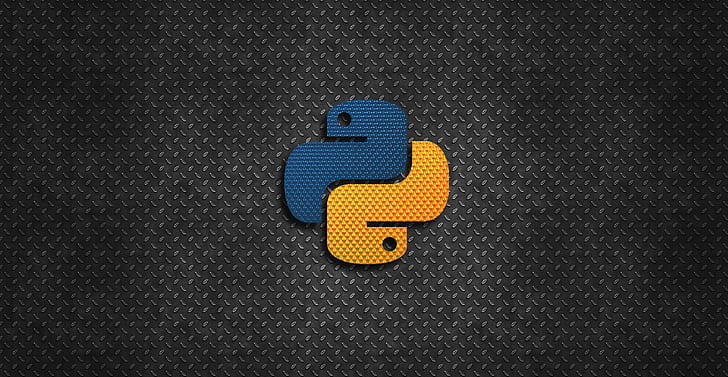
How to Split Training and Test Set in Python? How to Split Training and Test Set in Python?: Python is high level language, interpreted and object-oriented. Python is open-source, and free and support GUI programming. Python is advanced field because they provide different techniques: Scope: Python is high level programming language, to be the most auspicious career in technologies, industry. More opportunities in the career of python are increasing tremendously in the whole world and today companies are in demand in python language. The average salary of python developer is 4 lakhs per month in India and its increasing that depends upon experience. Advantage of python: Python have different libraries and their own different concepts According to different learning concept there are different models that are interrelated to their training sets. As we are working with different datasets, the machine learning algorithms works with different stages. We normally split the data in testing and training phases. Under supervised learning, we are split a multiple datasets into a training data and test sets in python Machine learning. The training dataset is used to prepare a model to train it. We have the inputs and outputs but we trained the output to fetch better error correction. Let we are telling about Machine learning algorithms they have multiple models that are related to different algorithms like Neural network, classifications of machine learning, clustering, regressions, convolutional neural network etc. These algorithms are feed data and trained itself by performing different models. Time Series, stock marketing used regression techniques that used into the models. We are discussing example like 5000 datasets that particular algorithms are training itself of the given model. They took 3000 datasets that they know data are accurate and 2000 dataset are performed single function to find accurate result. We usually let the test set be 30% of the entire data set and the rest of 70% will be the training set. These kinds of tests are giving error-free results. These are the scenario of split training and test set of python. Conclusion This is the concept of splitting training of python. If you are interested to learn more python concept, then you visit our O7services website. We provide online/offline python training in Jalandhar.
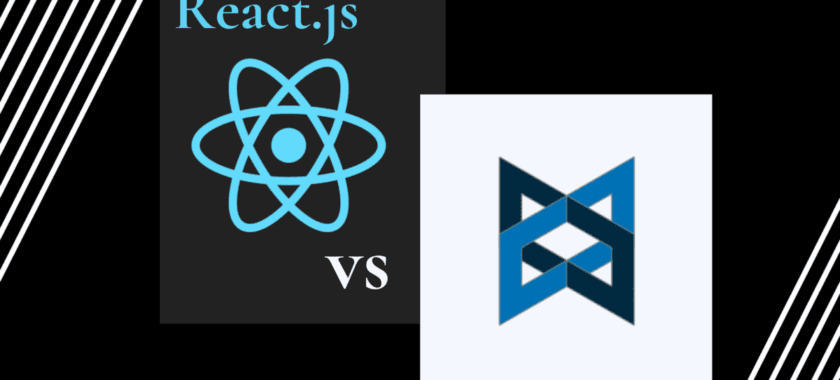
The Difference Between backbone.js and react.js There is a difference between backbone.js and react.js: Backbone.js and React.js are JavaScript libraries that are commonly used to develop web-based apps. They are different in their strategies and objectives. BackBone.js : Backbone.js: Backbone.js is a lightweight library that gives you an essential structure for organizing the code of an application. It follows the Model-View-Controller (MVC) design pattern, where models represent the data, views handle the UI, and controllers manage the application logic. React.js : React.js is an open-source component-based front end that includes a Model View Controller(MVC). The application renders information only when required. It reacts to the web page. Reactive implies it blocks unneeded page loading. Backbone.js is a JavaScript MVC framework and React could be defined as JavaScript UX libraries. JavaScript Structure model, ease of use as well and structure are among the main factors that anyone working using Backbone.js. Contrastingly, Virtual Dom, components and performance are the primary components of React. Both are downloadable in open source. With the rise of startups on Git Hub as well as Forks React is more well-known as compared to Backbone.js. Backbone.js stacks are less relative to React.js. Understanding the difference: Backbone.js vs React.js These are the key points we’ve summarized based on the discussion: Backbone.js Backbone is a system for organizing huge JavaScript applications by providing keys-values binding for models, as well as individual event assistance API function enumeration in event handling through views. It also connects all the applications directly to RESTful API and JSON formats.Backbone.js is a JavaScript MVC framework.JavaScript models, structures and ease of use are the main reasons for anyone to utilize Backbone.js.Other Github Star and Forks.Further Stacks of Backbone.js React.js But, react.js is an open-source component-based front-end, which offers a Model View Controller(MVC). This renders the data when necessary. It reacts with the webpage. The term “reactive” implies that it stops the non-required page reloading. React utilizes the JavaScript User Interface Library.However, Virtual Dom components as well as the performance of the application are the foundations that support React. There is a way to identify the best aspects.Github Forks and Starts Less.A lower amount of heaps React.js.
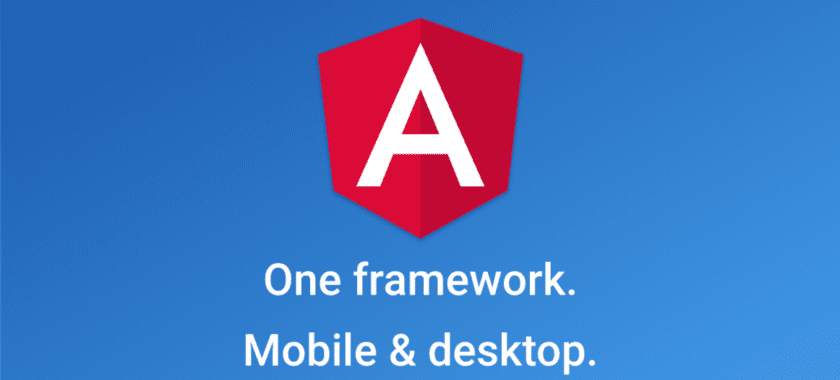
WHY DO WE USE ANGULAR? Angular is a widely used open-source front-end framework. It was initially developed by Google. The usage is to create dynamic and in-demand web applications. Angular’s first version introduced in 2010. The angular framework is having different versions. The highest version is angular 11. This is used by most of the developers as a front-end framework. Angular is a really useful front-end framework used to build single-page applications and it has amazing features which help to make attractive designs. Its features including two-way-binding, RESTful API handling, templating, dependency injection, AJAX handling, etc. Here we have different reasons that prove the facts that why we need angular? Assistance by Google This is the most important and highlighted advantage of angular that is supported by Google. Google team is also using this framework for their applications and they consider angular as a stable framework. TypeScript Angular applications can be build using JavaScript or TypeScript. TypeScript is a superScript of JavaScript. ES support is fully provided by the angular typescript feature. Declarative UI Angular UI is completely built-in HTML. It does not bother about the loading of the page elements. It simplifies the flow and the application runs smoothly. This process is done by Angular itself. Plain old JavaScript Object With Angular, we do not need any addition getter or setter function. The plain old javascript functionality does any functionality easily. Even loops and conditions can be applied directly. Effortless Testing In angular, the testing is so simple. The compiler does the scanning at run time which automatically controls the flow if something is wrong and the developer has to resolve the bug if there is any. Simplified MVC Pattern The angular framework works with the MVC(Model-View-Controller) architecture. It is automatic functionality the user does not have to tell it to divide the controller into different models. It is very much similar to MVVP(model-View_view-Model). Modular Structure The overall code divided into different modules in the form of components, directives, pipes, or services. If the project will be divided into different team members then it would be easy to manage and it will ultimately increase productivity. Code Consistency Code consistency is so important while we are talking about development. Angular provides code consistency throughout the project. Other Angular benefits are given below: In summary, I can say that if you are planning for the project development in the framework the angular is the best choice due to its variety of features and advancements.